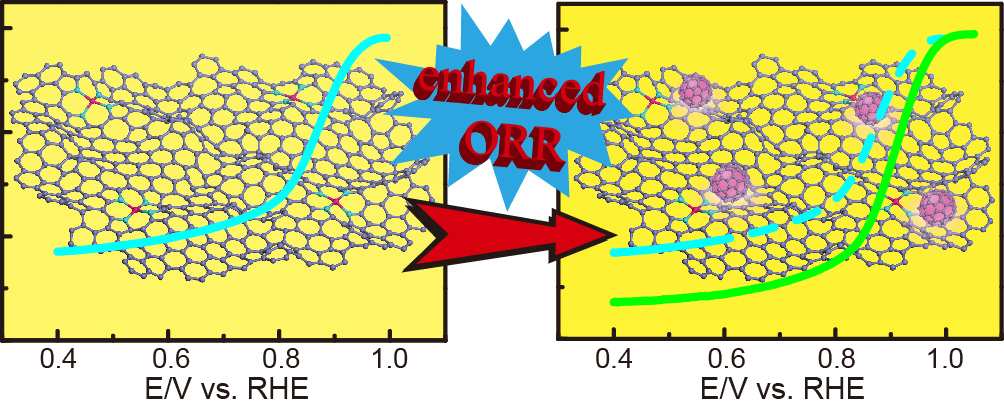Understanding the High Activity of Fe–N–C Electrocatalysts in Oxygen Reduction: Fe/Fe3C Nanoparticles Boost the Activity of Fe–Nx
Wen-Jie Jiang, Lin Gu, Li Li, Yun Zhang, Xing Zhang, Lin-Juan Zhang, Jian-Qiang Wang, Jin-Song Hu,Zidong Wei, and Li-Jun Wan
J. Am. Chem. Soc., 2016, 138 (10), pp 3570–3578
DOI: 10.1021/jacs.6b00757
Publication Date (Web): February 23, 2016
Abstract (click for pdf file)

Understanding the origin of high activity of Fe–N–C electrocatalysts in oxygen reduction reaction (ORR) is critical but still challenging for developing efficient sustainable nonprecious metal catalysts in fuel cells and metal–air batteries. Herein, we developed a new highly active Fe–N–C ORR catalyst containing Fe–Nx coordination sites and Fe/Fe3C nanocrystals (Fe@C-FeNC), and revealed the origin of its activity by intensively investigating the composition and the structure of the catalyst and their correlations with the electrochemical performance. The detailed analyses unambiguously confirmed the coexistence of Fe/Fe3C nanocrystals and Fe–Nx in the best catalyst. A series of designed experiments disclosed that (1) N-doped carbon substrate, Fe/Fe3C nanocrystals or Fe–Nx themselves did not deliver the high activity; (2) the catalysts with both Fe/Fe3C nanocrystals and Fe–Nx exhibited the high activity; (3) the higher content of Fe–Nx gave the higher activity; (4) the removal of Fe/Fe3C nanocrystals severely degraded the activity; (5) the blocking of Fe–Nx downgraded the activity and the recovery of the blocked Fe–Nx recovered the activity. These facts supported that the high ORR activity of the Fe@C-FeNC electrocatalysts should be ascribed to that Fe/Fe3C nanocrystals boost the activity of Fe–Nx. The coexistence of high content of Fe–Nx and sufficient metallic iron nanoparticles is essential for the high ORR activity. DFT calculation corroborated this conclusion by indicating that the interaction between metallic iron and Fe–N4 coordination structure favored the adsorption of oxygen molecule. These new findings open an avenue for the rational design and bottom-up synthesis of low-cost highly active ORR electrocatalysts.

